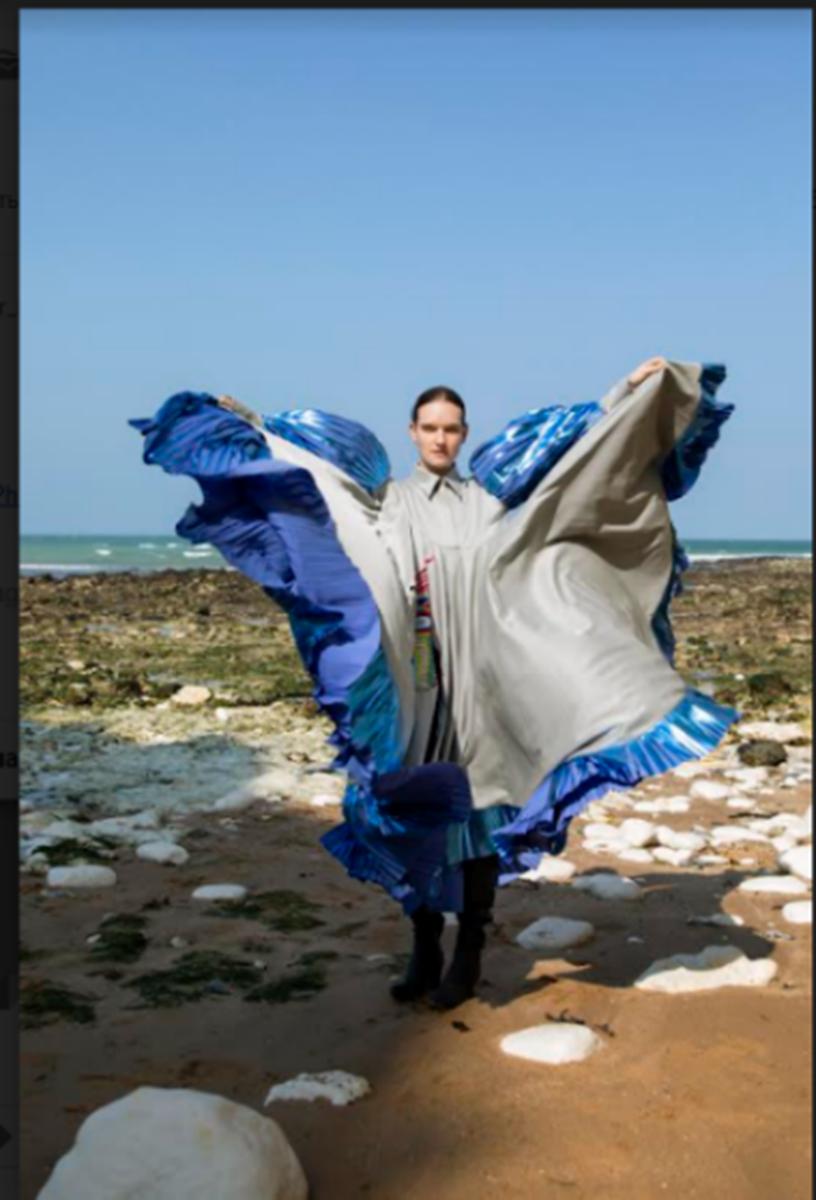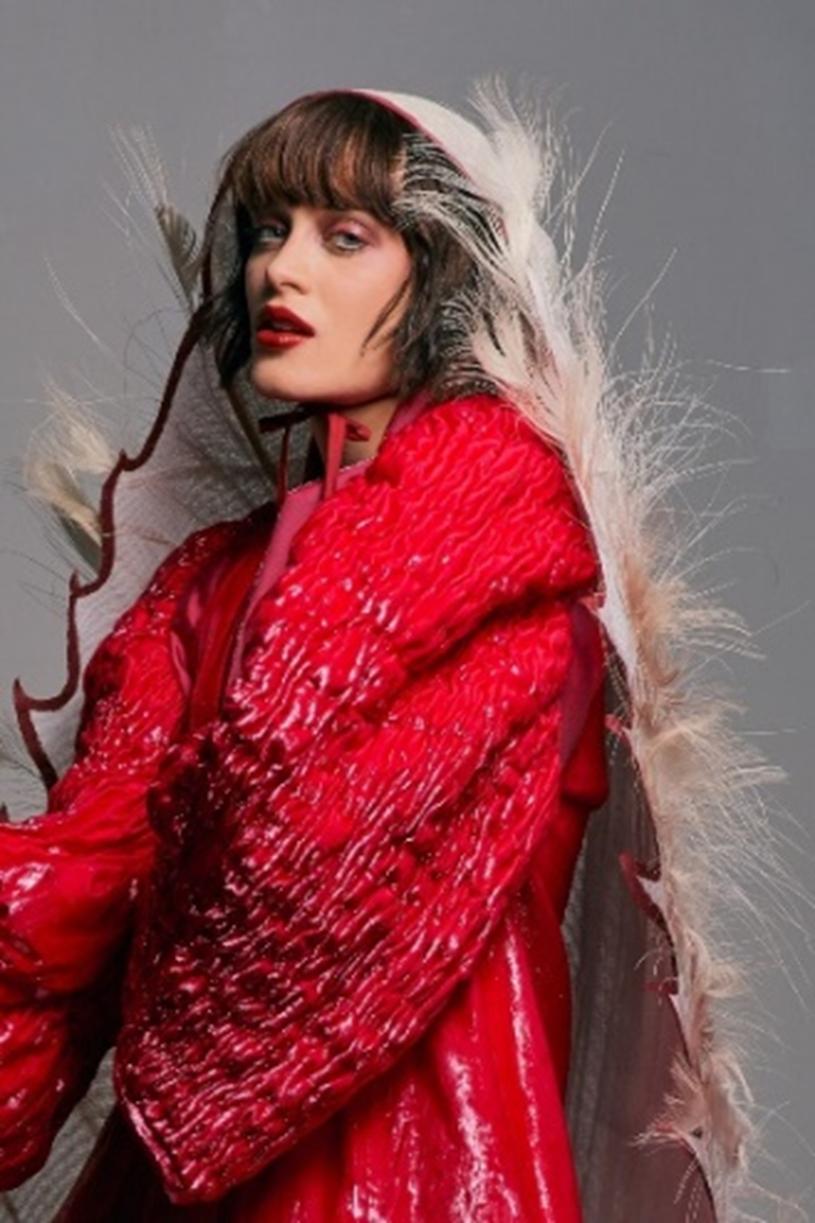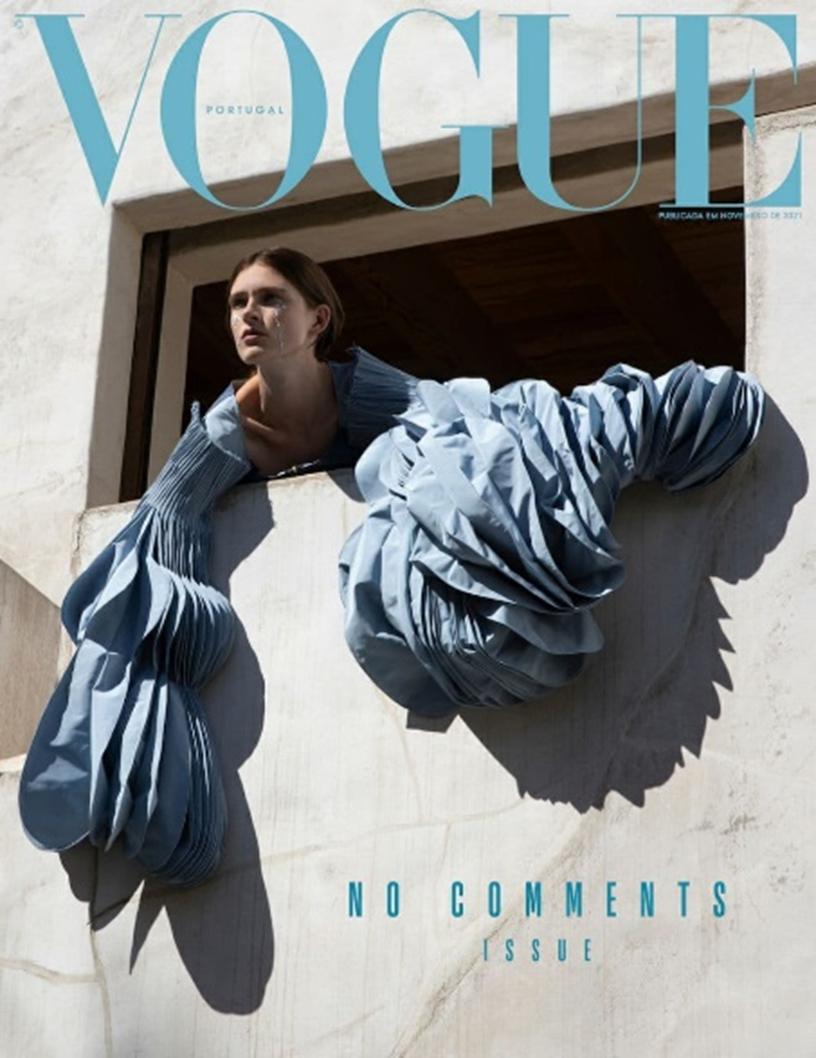Oroy is a designer and the founder of her own self-titled clothing brand OROY. Having successfully graduated from Central Saint Martin’s University of Design and Arts in London, the young woman has confidently entered the world of haute couture, her work is being published by countless global fashion magazines such as: VOGUE, ELLE, Harper's BAZAAR, L'Officiel, NUMERO, and others. Let's take a closer look at where Oroy gets her inspiration, the intricacies of her work as a designer, and her plans for the future.
The essence of inspiration
Oroy gets her inspiration from life itself because there are so many beautiful things created by nature and man. But her most important source of inspiration is her mother.
"Smart, charming and gentle, thoughtful in her choices, my 'Sukut' gem, positive and motivated in life. Whoever gets a chance to meet her receives a piece of her pure energy. All these qualities match her name - Fazilat," - the designer says of her mother.

As Oroy says: "A woman is a beautiful creation of Allah and she designs her clothes for all the women of the world and if they like the work, it's her success. Every woman deserves to dress beautifully, comfortably, and diverse!"
The designer draws inspiration no matter where she lives. Whether it is Tajikistan, the UK, the Netherlands, or any other country. In each of them, she tries to visit various museums, exhibitions, historical sites, and attractions. London, for example, is a city of beautiful contrasts that have made Oroy think outside the box. She also traveled to Bukhara to find the theme of her thesis. This city, where the first state of the Tajiks, the Samanid Empire was formed centuries ago, attracted her attention.

It was there that she first heard of the legend of Simurgh (a mythical bird in Persian mythology, equated to the phoenix) and was finally decided on the topic of her thesis.
Individuality and style
According to the young fashion designer, a modern woman should be able to dress suitable to the situation. Classic, modern, sporty style - everything at the right time. However, if a person can mix all the classified categories together - it means they are listening to their heart and intuition, rather than wearing what others have proclaimed to be a stereotype.

"Personally, I prefer not to get lost in the masses but to be unique because all people are individual. It is amazing when you can combine your grandmother's old traditional handmade Tajik silk coat with modern outfits that you have sewn, or bought from Italian silk or English wool. This is my style," says the young lady.
Oroy treasures the clothes worn by her grandmothers and great-grandmothers. These are things that are dear to her heart and cannot be thrown away. An old Tajik woman's robe (chapon) is handmade by one grandmother and an old chakan dress from the southern part of the country is from the second grandmother. Handmade items are those things that, even after so many years, remain beautiful, fashionable, and interesting. The designer always wears them with pleasure. Also, of special importance to her are the wedding dresses and suits (including zarduzi) that she, her sisters, and her mother sewed on a special device - a dukon for their elder sisters' weddings. Later the girls themselves wore these outfits for their own wedding ceremonies as well.

As for her own clothes, Oroy always tries to sew them herself. However, with three children, she sometimes goes shopping to buy clothes or shoes for them. Usually, a busy mum doesn't have much time, but sometimes she runs through the shops and finds something interesting for herself too. It must be not so much fashionable as comfortable, interesting, practical, and suitable for her. As the designer admits, she is a demanding customer.
People nowadays should try to buy less clothing and wear it longer - for the sake of the environment. That is why Oroy rarely buys anything in shops. It is important to her that clothes are professionally made, with quality fabrics, and that they win her attention.
Details of the profession
"What does it mean to be a designer? First of all, you have to be confident in yourself, in your business. To be a designer means to create fashion, not to be afraid of innovations, to be able to change people's concepts, but to do it so beautifully that they say: "There is something in it!” You have to create something new according to the demands of today's realities," says Oroy Shakhidi.

If it wasn't for design, she would probably have gone into logistics. She studied for 3 years at Rotterdam Business School (BA) in the Netherland, however postponed her study, because she moved to London after her marriage. Perhaps, Oroy could have been a tennis coach (big tennis), as she has been playing this sport professionally since she was 7 years old. Another career choice could be art. The fashion designer enjoys painting in her spare time. Maybe one day we will see an exhibition of her artistic works? Who knows?
Recently the young lady has started working on a costume for a well-known performer. The design process involves meeting with the client several times beforehand and studying their style. Then make sketches and present them to him. This way the designer understands 50% of what the client likes and what he or she doesn't like. Then comes the process of sewing the outfit from a rough draft - this is called a toile. After this stage, the client is invited to a fitting, and if he likes the way the clothes sit on him, then the chances that the final version of the product will be to his liking are higher. A craftsman has to put a lot of effort into this, and then the final result is perfect. However, not everything always goes according to plan, but as the saying goes: "the customer is always right". If the customer is not happy with anything, the costume can always be changed.

Collections and magazine covers
"Every collection has one or two pieces that are most meaningful to the designer. For example, in my graduation collection, it was a blue suit that ended up on the cover of Vogue (Portugal). All details of the costume are related to the concept theme: "The Conference of the Birds". As it is known from the legend, the birds gathered looking for their king, Simurgh. Their philosophy is interesting. Each fold is a silhouette of one bird.

Another collection that was shown at London Fashion Week was about the Simurgh bird itself - its silhouette, wings, and feathers. The pattern where the little boy sleeps on the feathers of the Simurgh is particularly eye-catching," - explains the fashion designer.
Oroy’s work has been featured in magazines such as TMRW Magazine, RAIN Magazine, Flanelle, NUMERO Berlin, L'Officiel Russia, 5Eleven Magazine, Fabric Magazine, NUMERO Russia, VOGUE (Portugal), Elle Kazakhstan, and Harper's BAZAAR Arabia.

Future plans
Oroy's main goals for the near future is to create new outfits, a beauty that was done before her, but, perhaps, in a different form. Today, designers must work with different recycled and interesting materials, using unusual and eye-catching details. Young women love to do this and if the talent is given to her "from above", it should work.







